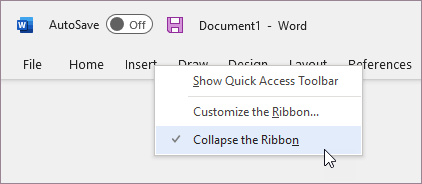
If you drag a floating toolbar to the top, bottom, left or right then it will become docked. Some of the toolbars you open are "floating" and some are "docked".įloating toolbars can appear over the presentation and can be moved and dragged around.ĭocked toolbars are anchored to the edge of the application window. These are extremely useful and can help identify the commands.


These are name given to the yellow boxes that appear when you hover over command buttons. These are commands that are greyed out and indicate that the commands are unavailable at that time. These are located on the right of the commands and indicate that a dialog box will be displayed in order to confirm the action. These are located on the far right of some commands and indicate that there is a submenu. These are located to the right of some commands and indicate that there is a alternative (and faster) way to activate the command. The icon is the same as that used on the toolbar. These are located to the left of some commands and indicate that there is a toolbar providing an alternative way to activate the command. You can move between the visible toolbars by pressing (Ctrl + Tab) or (Ctrl + Shift + Tab).Īll the Microsoft Office applications have standard conventions as far as the toolbars and menus are concerned. Once the command is highlighted you can press the Enter key to select it.įor example you could press (Alt + "E", "S") to display the Paste Special dialog box. Once the drop-down menu has expanded you can use similar methods to select the individual commands. You can expand a particular menu by pressing the Enter key or the Up or Down Arrow keys.Īlternatively you can select a particular drop-down menu by pressing the letter that is underlined on that menu. You can move between the menus by pressing the Arrow Keys or the Tab key. Pressing the Alt key will activate the Menu Bar an pressing the ESC key will deactivate the Menu Bar. You can select menu commands by using the mouse or by using the keyboard. This is to help you identify and remember the commands and to associate any commands that might be related. The commands on a drop-down menu are divided into groups.
These are displayed on the same row in recent version of Word although they can easily be adjusted to occupy two rows. When you first open Word there are two toolbars displayed, the Standard and Formatting toolbars.
#MICROSOFT WORD TOOLBAR HIDDEN FULL#
If the toolbar you want to display is not there you, press the Customise button at the bottom and select the Toolbars tab to get a full list. The ticks show all the toolbars that are currently displayed on the screen. To quickly display another toolbar select (View > Toolbars) and select the toolbar from the submenu. You can re-position any of the toolbars using the mouse and they can be docked to any side of the application window. The toolbars change automatically depending on what you are doing and on your personal settings.

PowerPoint contains over fifty pre-defined toolbars and over forty pre-defined shortcut menus. The image that appears next to a command on a drop-down menu is usually an indication that this command also exists on a toolbar. Toolbars offer quick shortcuts to commonly used commands. A menu (or drop-down menu) is the way in which actions can be performed.Ī toolbar is just a collection of icons that provides a shortcut to using the drop-down menu.Ī toolbar displays the commands in a simple linear display whereas menus can incorporate different levels.


 0 kommentar(er)
0 kommentar(er)
